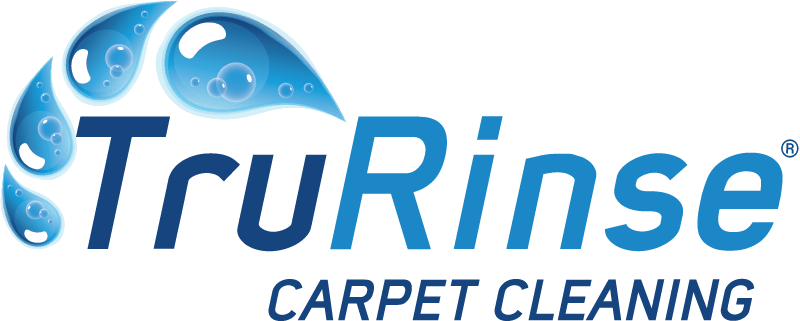Allergies can be a year-round nuisance for many people. From sneezing and itching to more severe reactions, allergens like dust mites, pet dander, and pollen, can significantly affect our health and comfort. If pesky allergens are affecting the comfort of your home, this blog is for you! While outdoor allergens are often beyond our control, there are steps we can take to reduce indoor allergens, particularly those lurking in our carpets. Deep cleaning your carpets is a crucial practice in maintaining a healthy indoor environment and alleviating allergy symptoms. Here’s why it’s essential and how it can make a difference in your home.
Understanding Common Indoor Allergens
To fully appreciate the benefits of deep carpet cleaning, it’s essential to understand the common indoor allergens that can accumulate in your home:
1. Dust Mites: Dust mites are microscopic creatures that thrive in warm, humid environments. They feed on the dead skin cells we shed and are commonly found in bedding, upholstered furniture, and carpets. Dust mite droppings and body fragments are potent allergens, often causing symptoms like sneezing, runny nose, and itchy eyes.
2. Pet Dander: Pet dander consists of tiny, even microscopic, flecks of skin shed by cats, dogs, rodents, birds, and other animals with fur or feathers. These particles can become airborne and settle on carpets, making them a significant source of allergens in homes with pets.
3. Pollen: Pollen from trees, grasses, and weeds can enter homes through open windows and doors or attach to clothing and pets. Once inside, it can settle into carpets, exacerbating allergy symptoms for sensitive individuals.
How Carpets Trap Allergens
Carpets are like giant filters, trapping allergens and preventing them from circulating in the air. While this might sound beneficial, it becomes problematic when these allergens accumulate over time and are not properly removed. Walking on carpets can disturb these particles, releasing them back into the air and causing allergic reactions.
The Benefits of Deep Carpet Cleaning
Regular vacuuming can help reduce the surface level of allergens, but it often isn’t enough to remove the deeply embedded particles. Deep carpet cleaning provides a more thorough solution by targeting allergens trapped within the carpet fibers. Here’s how deep cleaning your carpets can significantly improve your indoor air quality and reduce allergy symptoms:
1. Effective Allergen Removal: Deep carpet cleaning methods, such as hot water extraction (steam cleaning), shampooing, and dry cleaning, are designed to penetrate deep into the carpet fibers and extract allergens. Hot water extraction, in particular, uses high-temperature steam to loosen dirt, dust mites, and other allergens, which are then sucked away by a powerful vacuum.
2. Elimination of Dust Mites: Dust mites thrive in carpets, where they find a ready supply of food and favorable living conditions. The heat and moisture involved in steam cleaning can effectively kill dust mites and remove their waste products, significantly reducing the allergen load in your home.
3. Removal of Pet Dander: For pet owners, deep cleaning is essential to remove the dander that regular vacuuming leaves behind. This can be particularly beneficial for individuals with pet allergies, as it reduces the concentration of allergens in the carpet and prevents them from becoming airborne.
4. Improvement of Air Quality: By thoroughly cleaning your carpets, you reduce the overall allergen load in your home. This leads to cleaner air, which can alleviate respiratory symptoms and provide a healthier living environment for you and your family.
Choosing the Right Carpet Cleaning Method
There are several methods for deep cleaning carpets, each with its advantages and disadvantages. Here’s a brief overview of the most common methods:
1. Hot Water Extraction (Steam Cleaning): Hot water extraction, commonly known as steam cleaning, involves injecting hot water and cleaning solution into the carpet and then extracting the water along with dirt and allergens. Steam cleaning is highly effective for deep cleaning. The only downside is slightly longer dry times; however, if you have proper air flow in your home and place fans around the house, dry times may speed up.
2. Dry Cleaning: Dry cleaning uses a minimal amount of water and cleaning solution, which is applied to the carpet and then removed along with the dirt. This method has a shorter drying time but may not be as effective for deeply embedded dirt and allergens. Dry Cleaning may also result is residue depending on your product and how well it is removed.
3. Shampooing: Shampooing involves applying a foamy cleaner to the carpet and then scrubbing it with a machine. The foam encapsulates dirt and allergens, which are then vacuumed away after drying. This method can be effective but may leave lots of residue.
4. Encapsulation: Encapsulation uses synthetic detergents that crystallize into powder when they dry. The loosened dirt particles are encapsulated into powder and then vacuumed. This method is quick and has a short drying time but may not be as thorough as steam cleaning and still results in residue.
DIY vs. Professional Carpet Cleaning
While renting a carpet cleaner and doing it yourself can save money, professional carpet cleaning services offer several advantages:
Expertise: Professionals have the knowledge and experience to choose the right cleaning method for your carpet type and condition.
Equipment: Professional-grade equipment is more powerful and effective than rental machines.
Convenience: Hiring professionals saves you time and effort, ensuring a thorough and hassle-free cleaning process.
Conclusion
Deep cleaning your carpets is a vital step in reducing indoor allergens and improving your overall health and comfort. By effectively removing dust mites, pet dander, and pollen, deep cleaning helps create a cleaner and healthier living environment. Whether you choose to do it yourself or hire professionals, regular deep cleaning, combined with routine maintenance, can significantly alleviate allergy symptoms and enhance your quality of life. Don’t let allergens hide in your carpets—take action today to ensure a healthier home for you and your family.



Recent Comments